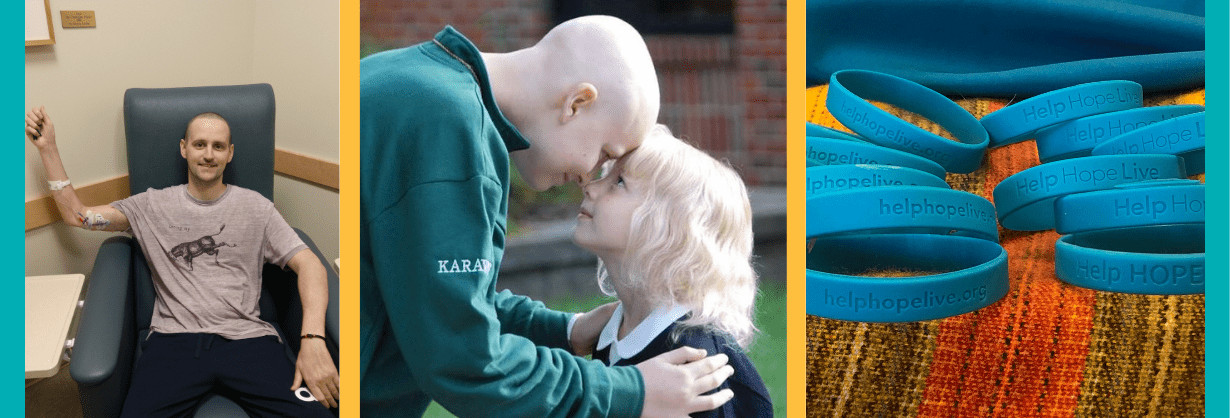
MobilityWorks
Accessibility for all: Helping people connect with who and what matters most
Searching...
No results found. Please try modifying your search.
Find stem cell transplant financial assistance by fundraising with our nonprofit.
Each year, thousands of patients undergo stem cell transplants for blood cancers, immune disorders, and other critical illnesses. Whether your transplant is autologous (using your own stem cells) or allogeneic (using a donor’s cells), the associated financial burden can be both unexpected and overwhelming.
For decades, transplant patients and their families have successfully secured financial help through fundraising, grants, and institutional support – including through campaigns with our nonprofit Help Hope Live.
In this post, you’ll learn about average stem cell transplant costs before insurance, common transplant-related costs that may not be covered by insurance, and how to get stem cell transplant financial assistance through fundraising as well as other avenues.
According to a 2025 Milliman report, the average cost of a stem cell transplant in the U.S. before insurance is staggering. The total estimated cost for an allogeneic stem cell transplant (donor cells) averages $1,261,800, while an autologous transplant (using your own cells) is around $577,200.
Here is a breakdown of typical expenses:
| Phase of Treatment | Estimated Cost |
|---|---|
| Pre-transplant evaluation & medical care (30 days) | $94,300 |
| Stem cell/bone marrow procurement | $97,400 |
| Hospital admission for transplant | $669,300 |
| Physician fees for transplant | $18,900 |
| Post-transplant medical care (180 days) | $314,200 |
| Medications | $67,700 |
| Phase of Treatment | Estimated Cost |
|---|---|
| Pre-transplant evaluation & medical care (30 days) | $77,900 |
| Stem cell/bone marrow procurement | $36,100 |
| Hospital admission for transplant | $275,500 |
| Physician fees for transplant | $11,500 |
| Post-transplant medical care (180 days) | $129,800 |
| Medications | $46,200 |
Beyond the procedure itself, there are many transplant-related expenses you may need to be prepared for—and some transplant centers require proof of financial readiness or active fundraising before you can become eligible for a transplant.
Typical costs include:
Coverage varies based on your insurance plan, transplant center, and medical circumstances. Some facilities only accept specific insurance providers. Keep in mind that even comprehensive insurance plans may leave you or a loved one with significant co-pays or deductibles, especially for out-of-state care.
Out-of-pocket expenses for medications, travel, or a donor search can climb rapidly and create an overwhelming burden. Raising medical funds through Help Hope Live can help bridge these gaps and provide vital financial relief.
Transplant centers offer financial counselors to help you navigate complex insurance processes and identify support resources. One of those resources is our nonprofit Help Hope Live.
Our mission is to offer hope and help to those facing the daunting costs of a stem cell transplant. Through compassionate, community-based medical fundraising, we help patients access the treatment they need by raising funds for medical and related costs.
The community-based fundraising process with our nonprofit starts with a few simple steps:
Help Hope Live stands apart by:
We are nonprofit with more than four decades of fundraising experience and a 4-star Charity Navigator rating.
Yes! Thousands of individuals have successfully funded their journey to a transplant or covered other medical expenses and related costs through a Help Hope Live fundraising campaign. Here are just a few of them.

Erin Meredith Cahill-Wetzel pursued rigorous treatments for triple negative breast cancer. Erin and her husband welcomed their fifth child into the world in February 2022 and commemorated the midpoint in Erin’s course of chemotherapy. Erin and her family have surpassed $21,000 raised with Help Hope Live.
In 2020, mom of three, wife, and friend Carmel Longoria learned that her cancer was out of remission. Unable to work and undergoing continuous chemotherapy as well as medical travel, Carmel and her family started fundraising with Help Hope Live. Within seven months, they surpassed $12,800 raised. Carmel was able to receive multiple transplants in 2021 to help her live a healthier life and keep fighting for hope.
At age 28, Patrick “PJ” Kent felt aches and pains that led to a shocking diagnosis of acute lymphocytic leukemia. Fundraising became a key lifeline for his family to assist with urgent medical needs, including specialized treatments, inpatient care, and unexpected hospitalizations. In 2020, his family faced the one-year anniversary of his diagnosis with renewed hope and support.
If you choose to fundraise with our nonprofit, here’s how the process will look:
1. APPLY for assistance
2. YOU’LL BE PAIRED with a Client Services Coordinator
3. YOUR COORDINATOR will provide you with one-on-one fundraising help, including personalized fundraising materials and guidance on how to rally your community, share your story on social media, reach out to the press, plan in-person or virtual fundraising events, and more.
Need Other Financial Help Options?
For alternatives to fundraising, you can find information on a variety of organ transplant financial assistance options. Please view our Transplant Resource Directory for insight into sources of direct financial aid, support groups, and other resources for transplant patients and their families.